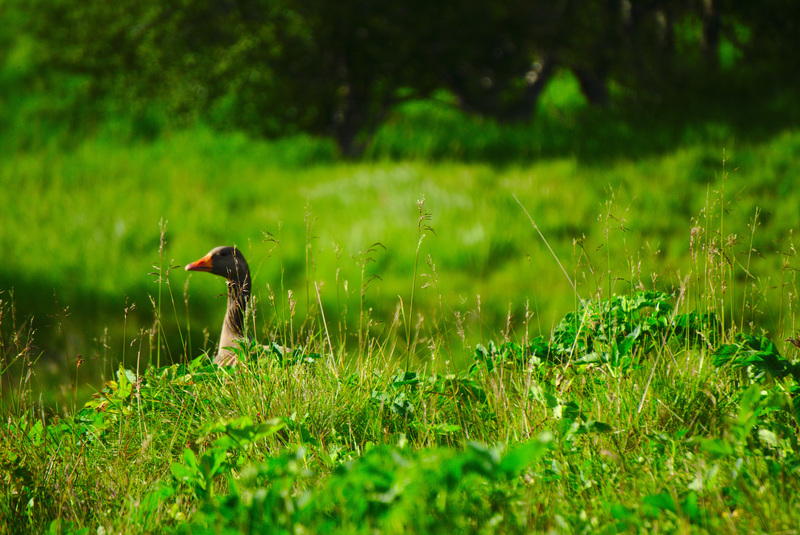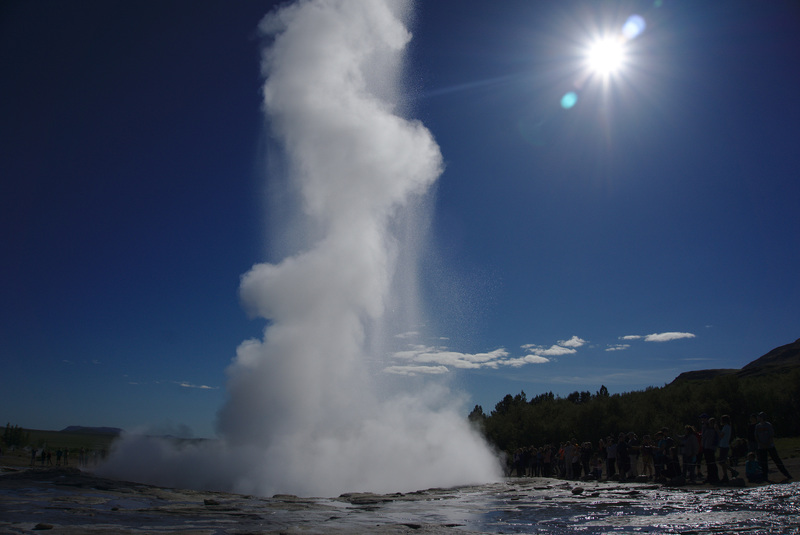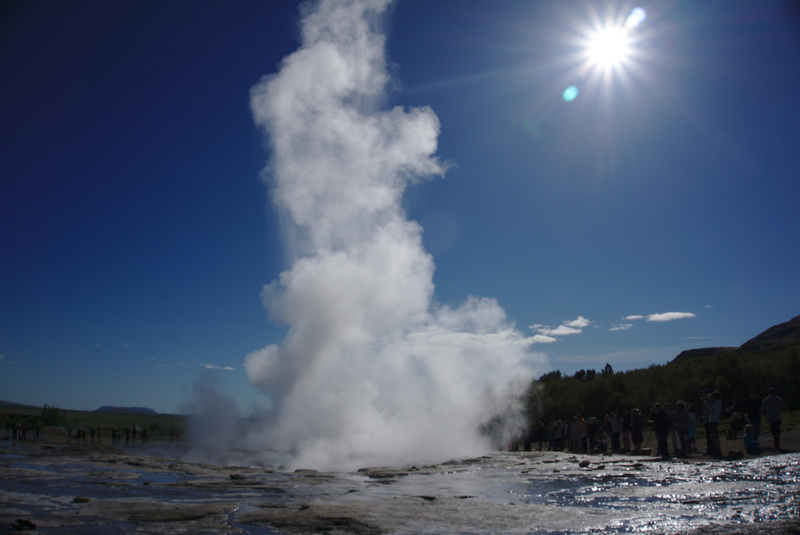This is the first part of my series about the Ringroad. For general suggestions, go to the introduction page. Here I’m going to tell you about the first day or days in the middle of the beautiful Þingvellir national park. You can download the GPX track of the first part of the Ringroad.
Nearby Reykjavik there are a lot of astonishing and breathtaking natural wonders: The Þingvellir national park itself (pronounced Thingvellier), the Geysir (such famous it is the eponym to the geysers) and the Gullfoss waterfall with it’s peculiar tectonic form. All three of them are absolutely worth going there, you don’t want to miss one. They are also reachable via car, and, if you are fast, you can visit almost all of them in a single day.
I suggested already in the Ringroad introduction that you might want to take a day or two at least as buffer, and the Golden Circle is a place where you could consider spending a little bit more time, especially if you are lucky and have a couple of sunny days. In this story I follow our route and start with the Þingvellir national park.
Þingvellir national park
(Pronounced more like “Think-vellir” and not like a “P”, but I’m not a native speaker, so who am I to teach you?)
You’re approaching the park from the West, and after a nice ride you will see it’s lake. The pictures are only covering part of it’s beauty, most of the time I’ve been driving and didn’t had much more time to make even more pictures.
The park has a inviting landscape and I can totally see it as a very nice place for some day-hikes. If I would live nearby (including Reykjavik) I could totally see myself going for a lot of hikes there.
As you might notice, there are not much woods in Iceland. This is true, Iceland’s woods were razed by the vikings. The forest service says, in the 9th century, when the settlement begun, about 25-40% of Icelands area contained birch forests and woodland. Around mid of the 20th century the wood reached a minimum, with only 1% of the area being the typical Icelandic birchwoods. Nowadays there are re-forestation programs established and the people try to re-establish different types of forests, with birch being the governing type. See their Forest Service website for more info.
Anyways, Þingvellir is absolutely brilliant to visit from the landscape point of view. It’s between two tectonic plates and in the middle of the national park you can see a valley, formed by the plates drifting away. Because there is a nearby lake, between the tectonic plates, there is a (not too deep) void, where you can go diving: in Silfra. We decided already in Reykjavik to go on a snorkeling tour there. It’s costy but it was worth it: The water is crystal clear, and you’re diving in a world filled with blue and green. The colors are amazing and it’s an experience you won’t regret. Silfra advertises the experience with the “clearest water on earth” (not commenting on that) Also, it’s cold, but you will get a dry-suit.
This place is historical. Þingvellir was the place for the historical parlament of Iceland, called the Althing. They held session in the park until 1793 [Wikipedia], and you can still see the place, where the people met. It’s in the middle of the national park, and it’s open for visitors. That is one of the reason, why Þingvellir is also a UNESCO World heritage site.
Oh, and geese are doubtful the governing species in the national park. Don’t mess with them!
Goose are the dominant species in the national park
Geysir Geothermal Area
This is the second place we visited in the Golden Circle.
One of the hot tubs in the Geysir park
Geysir is a active geothermal region with boiling mud pits, hot water tubs and the active Strokkur geysir, that spits water up every few (6-10) minutes. The features picture of this post is an eruption of Strokkur.
Experiencing an eruption was something I haven’t seen anywhere else before. It was overwhelming and kind of magic. It teaches you everything you need to know about how small you are as a human being. And Strokkur is rather a small geyser. Geysir (it’s the name of the big one in this location) was the name-giver of geysers and erupted in 1845 with a peak altitude of about 170m. Wow!
Geysers are by the way also a very interesting physical phenomena. The water heats up under high pressure until it starts boiling. As it boils, water evaporates, relieving some of the pressure, thus causing a run-away process of evaporation and condensation that blows finally up as the natural phenomena.
But that’s maybe stuff for an extra post, if I find time for going into the physics of geysers 😉
… And you can buy canned Icelandic Fresh air in the souvenir shop … For whatever reasons you would want to buy that …
Canned fresh mountain air. Who buys such things?!?
Concluding: You would definitely miss out something, if you are not going to visit the Geysir area!
Gullfoss Waterfall
The Gullfoss waterfall was our final stop of the day. It was shaped by two colliding tectonic plates forming a fissue canyon in a unique way The waterfall has it’s own website and is a touristic attraction. You might find it a bit crowded, but the waterfall is worth going there and you still will get your peaceful moments.
The Gullfoss is beautiful, but, because you might encounter a lot of other waterfalls (like the not-too-close Öxarárfoss) on the way, this is the only stop that you might consider skipping. But then you have not completed the full Golden Circle, but it’s up to you to decide 😉
Flying your drones is prohibited, by the way. For valid reasons.
That’s for now, the Golden Circle is definitely worth visiting. It’s close enough to Reykjavik to be also a stand-alone day trip with a rental car and a good kickoff for a very nice road trip around Iceland.
I can also imagine, that a helicopter or airplane ride around the Golden Circle can be absolutely breathtaking, but leave it to the ecological side and the financial situation of the individual traveler to actually consider it.












